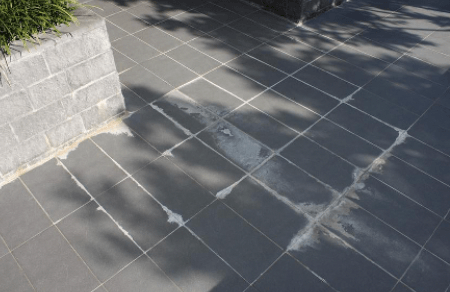Your Cart is Empty
In chemistry, efflorescence is the migration of a salt to the surface of a porous material, where it forms a coating. The occurrence of efflorescence is a potential problem whenever Portland cement products are used.
Efflorescence is a white crystalline deposit that is composed of salts, lime, and/or other soluble minerals. These salts and minerals travel to the surface, using water as their transport mechanism, where exposure to the environment evaporates the water, and exposure to carbon dioxide changes the deposits chemically leaving behind salts and minerals (white residue) on the surface.
The moisture has sometimes been found to come from brick, tile, concrete blocks, cement, mortar, concrete, and similar materials in the wall or above.
– Or –
Add a latex additive to the grout. Adding latex to a grout powder lowers the absorption rate of the mortar and helps to minimize the movement of moisture through the mortar.
Unfortunately, at this point, there is no clear-cut answer for the total elimination of efflorescence. The tips above may help reduce efflorescence, but no guarantee can be provided that efflorescence won't occur.
Information provided by Laticrete

